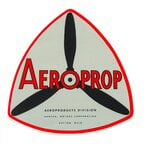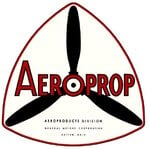I've always wondered why the Bearcat never had a prop spinner or a small hub. On the previous Grumman 'cat' series fighters (F4F, F6F, F7F) there were hubs. The P-47 also had a propeller hub. Was it something unique to the Pratt & Whitney radial engine? The Focke-Wolf 190 had a spinner on its radial engine. I would think there would be some aerodynamic benefit but maybe not with that big, opening necessary to cool the cylinders. (Photo taken by me in Arlington, Washington at the local EAA Airshow in 2017)
 hub but the F8F has a big, flat
hub but the F8F has a big, flat
Navigation
Install the app
How to install the app on iOS
Follow along with the video below to see how to install our site as a web app on your home screen.
Note: This feature may not be available in some browsers.
More options
You are using an out of date browser. It may not display this or other websites correctly.
You should upgrade or use an alternative browser.
You should upgrade or use an alternative browser.
F8F Bearcat prop spinner
- Thread starter Spitlead
- Start date
Ad: This forum contains affiliate links to products on Amazon and eBay. More information in Terms and rules
More options
Who Replied?FLYBOYJ
"THE GREAT GAZOO"
I think a combination of cooling and necessity. Someone decided that there was no value added. As a wrench turner I'll attest removing spinners to get to the prop is a royal pain in the @ss.
- Thread starter
- #3
I think a combination of cooling and necessity. Someone decided that there was no value added. As a wrench turner I'll attest removing spinners to get to the prop is a royal pain in the @ss.
Personally, I love the Bearcat. It's a lean, mean beast of an airplane. Saw one at the Reno Air Races in 1984, Rare Bear.
FLYBOYJ
"THE GREAT GAZOO"
Personally, I love the Bearcat. It's a lean, mean beast of an airplane. Saw one at the Reno Air Races in 1984, Rare Bear.
You mean this one?
MiTasol
2nd Lieutenant
I think a combination of cooling and necessity. Someone decided that there was no value added. As a wrench turner I'll attest removing spinners to get to the prop is a royal pain in the @ss.
Totally agree
And the Bearcat does have a hub - that is the name of the cross in the middle that supports/retains the four blades.
What is "missing" is the dome used on Curtiss and HamStd props to control the pitch. On Aeroproducts props the equivalent mechanism was buried in the hub and blade root.
FLYBOYJ
"THE GREAT GAZOO"
The only aircraft that I worked on that had a spinner that was somewhat easily removed was the P-3 and the C-130. Still a pain in the @ss.
Crimea_River
Marshal
The insides of a Hamilton Standard hub and dome - Mosquito RS700:


The P-47's with a pointy "spinner" had the Curtiss-Electric propeller. The "spinner" covered the electric motor and reduction gearing on the nose of the hub. The dome on the Hamilton-Standard Hydromatics contain the spiral cam and hydraulic actuator which rotate the blades; absence is not an option. The Bearcat uses an Aeroproducts propeller which, by design, has a hollow bore. It has no spinner, just the central round metal round cover. The Aeroproducts props on the P-51K and P-51H had spinners, as did Howard Pardue's F8F-1 (for a while) and Greenamyer's F8F-2 Conquest 1 racer using P-51H spinners. The radial racers use spinners for aerodynamic considerations, but some racers (Dreadnaught w/ Aerprop) also flow water mist over the cylinders at high power for good cooling with reduced air volume/lower drag through the cowl. For the radial engines in military service, the spinner tended to be more of a maintenance headache (removal to service prop; another thing to carefully balance; rotational sensitivity to battle damage) than aerodynamic benefit. That being said, the P-61 had beautiful spinners for the C-E props. The spinners on the early B-26's weren't used on later models; more trouble than benefit.
- Thread starter
- #9
The P-47's with a pointy "spinner" had the Curtiss-Electric propeller. The "spinner" covered the electric motor and reduction gearing on the nose of the hub. The dome on the Hamilton-Standard Hydromatics contain the spiral cam and hydraulic actuator which rotate the blades; absence is not an option. The Bearcat uses an Aeroproducts propeller which, by design, has a hollow bore. It has no spinner, just the central round metal round cover. The Aeroproducts props on the P-51K and P-51H had spinners, as did Howard Pardue's F8F-1 (for a while) and Greenamyer's F8F-2 Conquest 1 racer using P-51H spinners. The radial racers use spinners for aerodynamic considerations, but some racers (Dreadnaught w/ Aerprop) also flow water mist over the cylinders at high power for good cooling with reduced air volume/lower drag through the cowl. For the radial engines in military service, the spinner tended to be more of a maintenance headache (removal to service prop; another thing to carefully balance; rotational sensitivity to battle damage) than aerodynamic benefit. That being said, the P-61 had beautiful spinners for the C-E props. The spinners on the early B-26's weren't used on later models; more trouble than benefit.
Many thanks Tom. Good info. I appreciate it.
More here: http://www.enginehistory.org/Propellers/Aeroproducts/aeroproducts.shtmlMany thanks Tom. Good info. I appreciate it.
bdefen
Senior Airman
Douglas A-1 Skyraider had a similar hub.I've always wondered why the Bearcat never had a prop spinner or a small hub. On the previous Grumman 'cat' series fighters (F4F, F6F, F7F) there were hubs. The P-47 also had a propeller hub. Was it something unique to the Pratt & Whitney radial engine? The Focke-Wolf 190 had a spinner on its radial engine. I would think there would be some aerodynamic benefit but maybe not with that big, opening necessary to cool the cylinders. (Photo taken by me in Arlington, Washington at the local EAA Airshow in 2017)
View attachment 575672hub but the F8F has a big, flat
- Thread starter
- #12
Douglas A-1 Skyraider had a similar hub.View attachment 576349
Does anyone know if the prop on the A-1 Skyraider is the same as was used on the Bearcat? Or at least the same manufacturer? They look quite similar.
MiTasol
2nd Lieutenant
Both use Aeroproducts props. I doubt that they are similar models.
The F8F-1/-2 Bearcat, P-51K, P-51H, and P-63 use an A542 series Aeroproducts propeller: "A" for Aeroproducts, "5" for 50 spline, "4" is for four blade, and "2" for #2 sized blade socket. The Skyraider used the A642 series propeller, so it it fits on a 60 spline propeller shaft. The size of driving spline/prop shaft is correlated to the amount of horsepower put on the propeller shaft. The hub sockets are the same size and operating mechanics are essentially identical between the A542 and A642 propellers. Blades lengths, thus installed diameter, installed weight, as well as blade shapes vary for the different aircraft and flight profiles. There was continuous improvements in the seals over time, so leakage became less of an issue in later propellers.
- Thread starter
- #15
The F8F-1/-2 Bearcat, P-51K, P-51H, and P-63 use an A542 series Aeroproducts propeller: "A" for Aeroproducts, "5" for 50 spline, "4" is for four blade, and "2" for #2 sized blade socket. The Skyraider used the A642 series propeller, so it it fits on a 60 spline propeller shaft. The size of driving spline/prop shaft is correlated to the amount of horsepower put on the propeller shaft. The hub sockets are the same size and operating mechanics are essentially identical between the A542 and A642 propellers. Blades lengths, thus installed diameter, installed weight, as well as blade shapes vary for the different aircraft and flight profiles. There was continuous improvements in the seals over time, so leakage became less of an issue in later propellers.
Excellent detail. Thanks for that Tom. Visually, they are the same, thus my question, but as you noted the spline is more robust for the higher h.p. Thanks again. Cheers!
Excellent detail. Thanks for that Tom. Visually, they are the same, thus my question, but as you noted the spline is more robust for the higher h.p. Thanks again. Cheers!
Attachments
Users who are viewing this thread
Total: 1 (members: 0, guests: 1)


